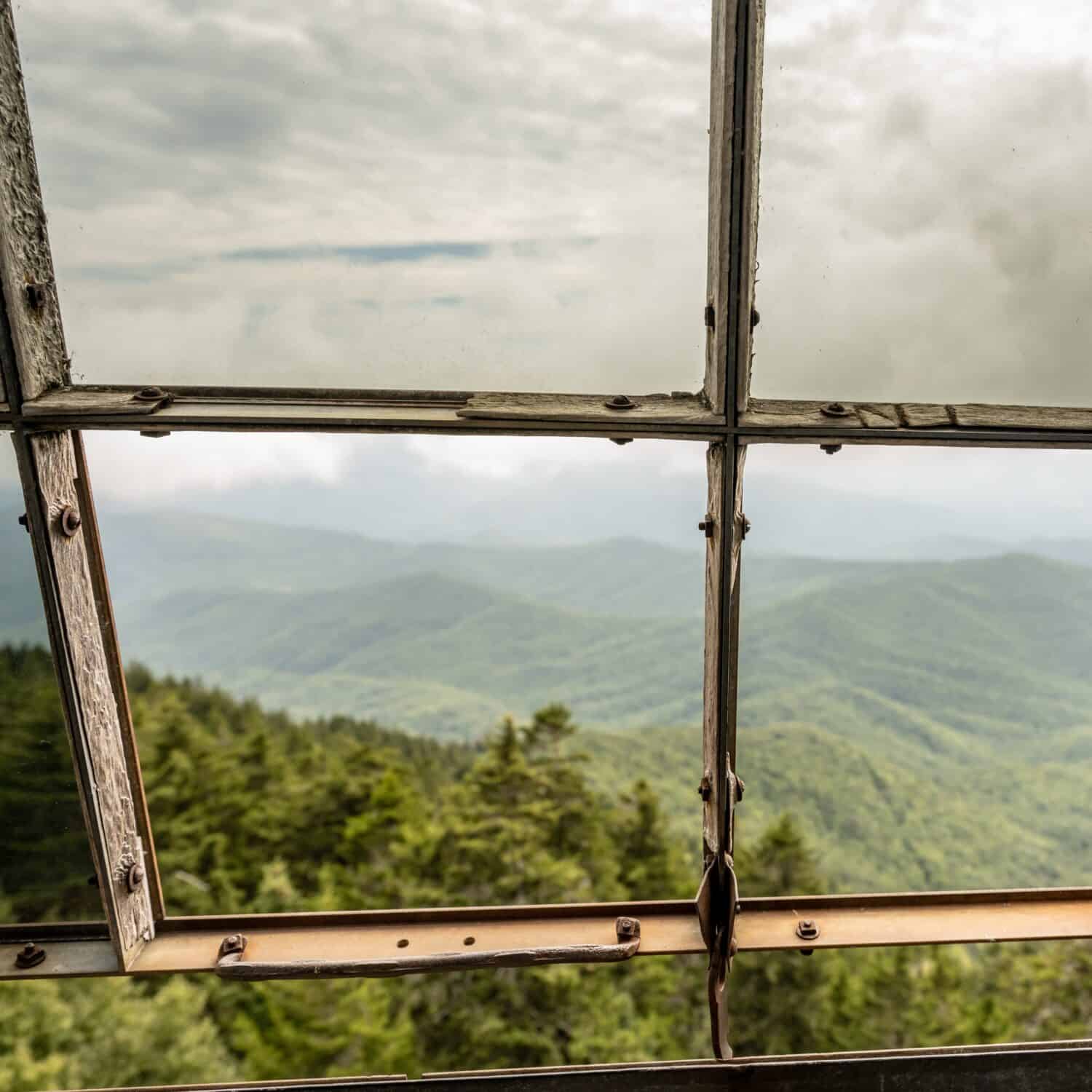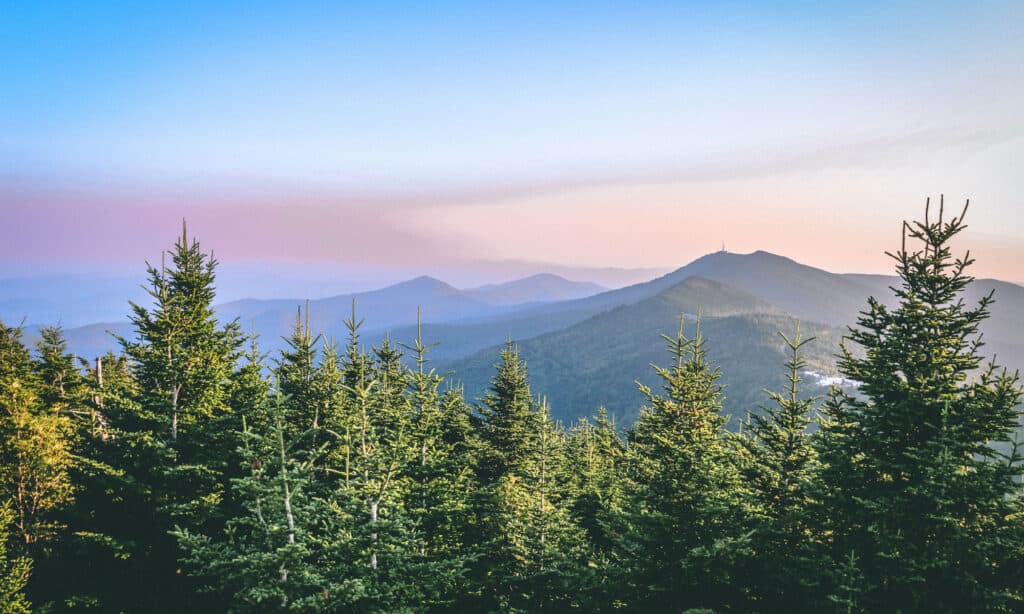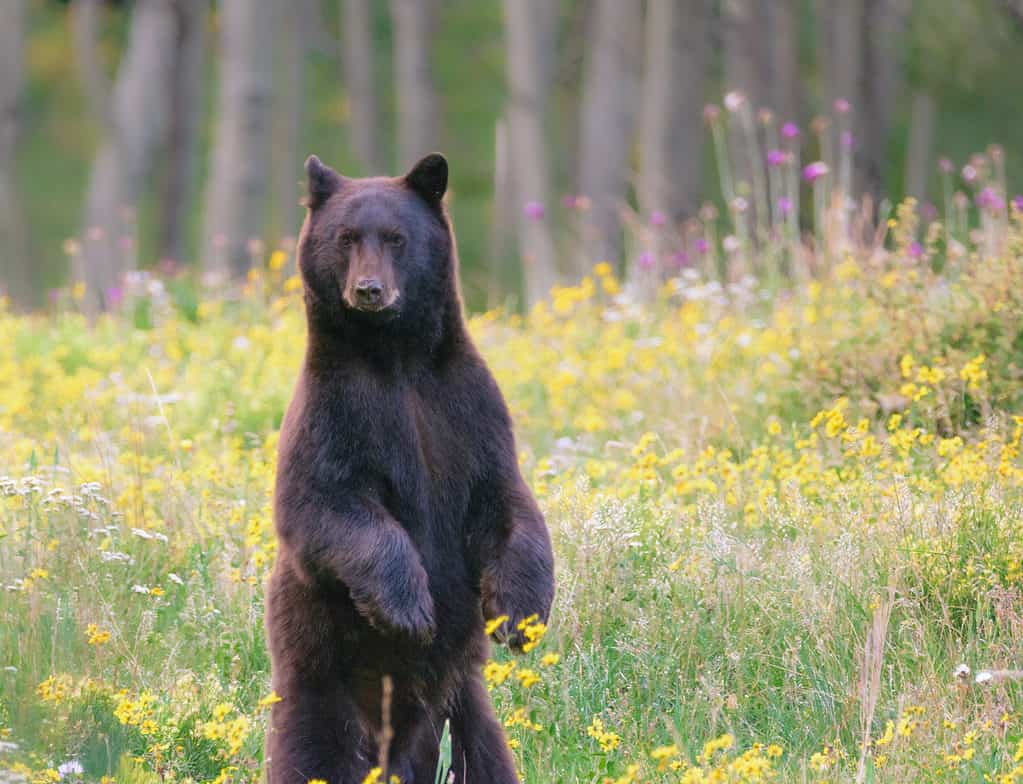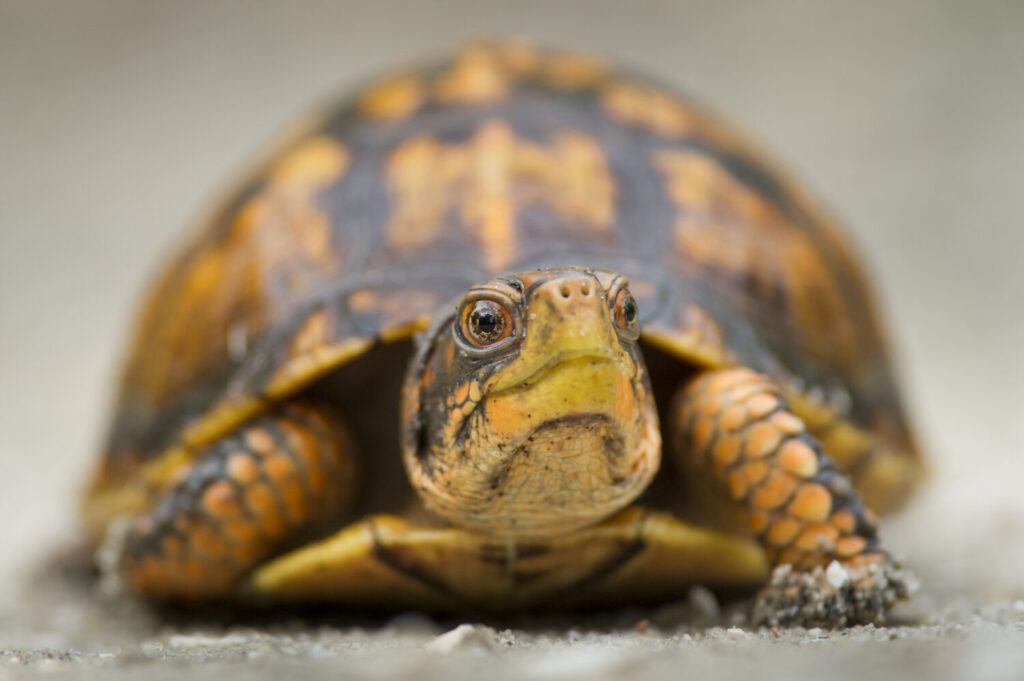North Carolina’s Mount Sterling in the Great Smoky Mountains is a lofty peak with lots of epic wildlife and interesting plants. If you’re a peak bagger or just interested in how tall Mount Sterling in North Carolina is, you’re in the right place. Let’s discover its height, if you can drive there, and what animals prowl around its dizzying peak.

North Carolina’s Mount Sterling is 5,842 feet above sea level.
©Kelly vanDellen/Shutterstock.com
Height of North Carolina’s Mount Sterling
Mount Sterling is 5,842 feet (1,781 meters) above sea level. It’s a high peak of the Smokies, but it’s not the tallest mountain in North Carolina. That honor belongs to 6,684 feet tall (2,037 meters) Mount Mitchell in the Appalachian Mountains of Yancy County.
Legends say the name Sterling comes from a two-foot-wide lead vein in the Pigeon River that some folks mistook for silver. Pigeon River runs along the northern base of Mount Sterling.
Where Is Mount Sterling?
North Carolina’s Mount Sterling is located in the northeastern part of the Great Smoky Mountains National Park in Haywood County, North Carolina. Often shortened to The Great Smokies, the area is a sub-mountain range of the Appalachian Mountains that rises along the North Carolina-Tennessee border.
The Smoky Mountains, including Mount Sterling, form the Great Smoky Mountains National Park. Established in 1934, it attracts the most visitors of all U.S. national parks. Over 11 million people visit every year.

Mount Sterling is a peak in The Great Smoky Mountains.
©Kent Weakley/Shutterstock.com
Why Is Mount Sterling So Tall?
Mount Sterling chiefly formed from Precambrian metamorphic sandstone almost a billion years ago. Ancient tectonic plate movement pushed the Great Smoky Mountains up, and glacier actions formed deep gorges.
What Is There to Do at Mount Sterling?
At Mount Sterling’s summit, a 60-foot-tall steel fire tower crowns the skyline. It’s one of 10 scattered through the Smokies. All but one were built by the Civilian Conservation Corps during the Depression to watch for spring and fall wildfires.
Sadly, only four fire towers remain, and only three are climbable. Mount Sterling’s 80-step fire tower is accessible, and the 360-degree panorama of the surrounding peaks and forest is staggering – if you climb on a cloud-free day! Due to Mount Sterling’s lofty elevation, it’s often swathed in clouds. If the clouds part, hikers are rewarded with views of Mount Guyot and 6,155-feet tall Big Cataloochee Mountain, near Mount Sterling Ridge.
In case you’re curious, the other climbable fire towers are on Mount Cammerer and Shuckstack Mountain. It’s possible to spot Mount Cammerer’s fire tower from Mount Sterling’s.
Today, Mount Sterling’s fire tower hosts the park’s solar-powered emergency communications equipment. Installing solar-powered equipment unencumbered the park from 3.5 miles of power line and 50 huge telecommunication poles.

Mount Sterling’s fire tower has a 360-degree panoramic view in clear weather.
©Kelly vanDellen/Shutterstock.com
North Carolina’s Highest Peaks
Mount Sterling rises 5,842 feet, but it’s not the tallest in North Carolina. Here are the county’s tallest peaks.
- Mount Mitchell: 6,684 feet (2037 meters) in the Black Mountain range of the Appalachian Mountains, Yancey County. It’s North America’s tallest peak east of the Mississippi River.
- Clingmans Dome: 6,643 feet (2,025 meters) in the Great Smoky Mountains.
- Richland Balsam: 6,410 feet (1,950 meters) in the Great Balsam Mountains.
- Waterrick Knob: 6,292 feet (1,918 meters) in Plott Balsam Mountains.
- Roan Mountain: 6,285 feet (1,916 meters) in the Appalachian Mountains’ Raon-Unaka Range.

The highest point in North Carolina is Mount Mitchell.
©iStock.com/Frederik Flagstad
How Tall Is Mount Sterling Compared to North America’s Mountains?
Mount Sterling tops out at 5,842 feet tall, so it’s much smaller than North America’s tallest mountain, 20,310 feet above sea level, Denali, also called Mount McKinley, situated in south-central Alaska.
However, it towers above what is considered North America’s smallest mountain range, the Sutter Buttes, which rise just 2,000 feet (610 meters) in Southern California.
Can You Drive Up Mount Sterling?
No, you can’t drive to the summit of Mount Sterling, but its campsites have car parks.
The shortest route to the summit is Mount Sterling Trail, which starts near the Big Creek ranger station near Waterville. It’s a steep hike that rises 2,000 feet in 2.7 miles, but a more meandering and interesting hike in terms of ecosystems is the 6.2-mile Baxter Creek Trail.
Baxter Creek trailhead begins at the Big Creek picnic area and lasts 6.2 miles in one direction, so remember to double that if you’re heading back the same day.
Do Wildfires Break Out on Mount Sterling?
Wildfires break out in the Smoky Mountains, so it’s vitally important to check reports before heading there, such as North Carolina’s Wildlife Service, for updates on current wildfires. In November 2016, the Gatlinburg wildfires burnt Pigeon Forge and Gatlinburg towns, and 14 people lost their lives.
Spring and fall are wildfire seasons due to dry vegetation, low humidity, and strong gusty winds. Agriculture and forest management services burn land to manage crops and undergrowth, too.
What Animals Live on Mount Sterling?
Mount Sterling is home to epic wildlife. Its habitat houses the Eastern United States’ densest population of black bears and numerous diverse salamanders, too.
Experts say Smoky Mountain Park has North America’s most diverse ecosystem. It’s estimated that 240 bird species, 65 mammal species, 67 native fish species, and 40 reptile species live there. It’s a UNESCO World Heritage Site as a result.
North American Black Bear
With the densest range of black bears in the Eastern United States, the likelihood of spotting one is higher than in other national parks! Black ears symbolize the Smoky Mountains, and it’s estimated that 1,500 black bears live there. That works out to around two bears per square mile.
Despite the name, the black bear’s color ranges from dark brown to blond. On Mount Sterling, omnivorous black bears can reach 6.5 feet tall on their back legs. They hunt deer and feast on varied forest vegetation, including nuts, shoots, berries, and fruit. Overwintering black bears use a form of hibernation to make it through the lean months, emerging sleepy and hungry in spring.
Bear spray, leashed dogs, and eagle eyes are a must for Great Smoky Mountain hikers.

Mount Sterling has the greatest density of black bears in the Eastern United States.
©Constance Mahoney/Shutterstock.com
White-Tailed Deer
White-tailed deer live in forests, grazing on grass, flowers, or tree bark. Chiefly spotted in the early morning and evening, these handsome deer can jump 10 feet and run at 30 mph! When startled or escaping predators, white-tailed deer lift their tails to expose a flash of white.
Males lose antlers annually, which is always an exciting find for children. White-tailed deer live on Mount Sterling’s lower elevations.
Bobcat
Stealthy bobcats hunt small mammals such as squirrels, birds, rodents, and lizards throughout Mount Sterling’s varied ecosystems. They conceal their lithe bodies in forest trees and utilize incredible climbing skills to avoid predators.
These solitary, spotty creatures weigh up to 70 pounds with cute, short bobbed tails. Count yourself lucky if you spot a bobcat because they prefer to hunt at night and shy away from human contact.

Bobcats prefer to hunt rodents, birds, and rabbits at night.
©Chris Desborough/Shutterstock.com
Snakes
Twenty-three snake species inhabit The Smokies, but only the timber rattlesnake and the northern copperhead are venomous.
Rattlers warn with their distinctive loud rattle, but copperheads don’t, so keep your eyes peeled. Snakes sunbathe on open paths and rocks in early spring but tend to hunt rodents and birds in safer forested areas. They live beneath logs, in rocky caves, and in leaf litter.
Always wear sturdy hiking boots on Mount Sterling and its surrounding campsites. Flip-flops are a big no in this territory.
Eastern Box Turtle
Eastern box turtles reach around eight inches long with a high domed shell in brown, black, and olive shades with orange blotches.
These intrepid creatures can live 40-50 years. On Mount Sterling, they eat vegetation, including berries, mushrooms, and leaves. Young box turtles also feast on slugs, worms, and small salamanders.

Eastern box turtles roam Mount Sterling, eating vegetation and mollusks.
©Ray Hennessy/Shutterstock.com
Salamanders
Mount Sterling’s incredibly diverse ecosystems provide homes for thirty salamander species, so many it’s called the Salamander Capital of the World. These elusive carnivorous amphibians live near water beneath rocks, leaf litter, and fallen trees. They hunt spiders, worms, and small fish at night.
In the Smoky Mountains, salamander evolution has produced 24 species of lungless salamanders that absorb and release oxygen through their skin!
The photo featured at the top of this post is © Geoffrey Kuchera/Shutterstock.com
Thank you for reading! Have some feedback for us? Contact the AZ Animals editorial team.







